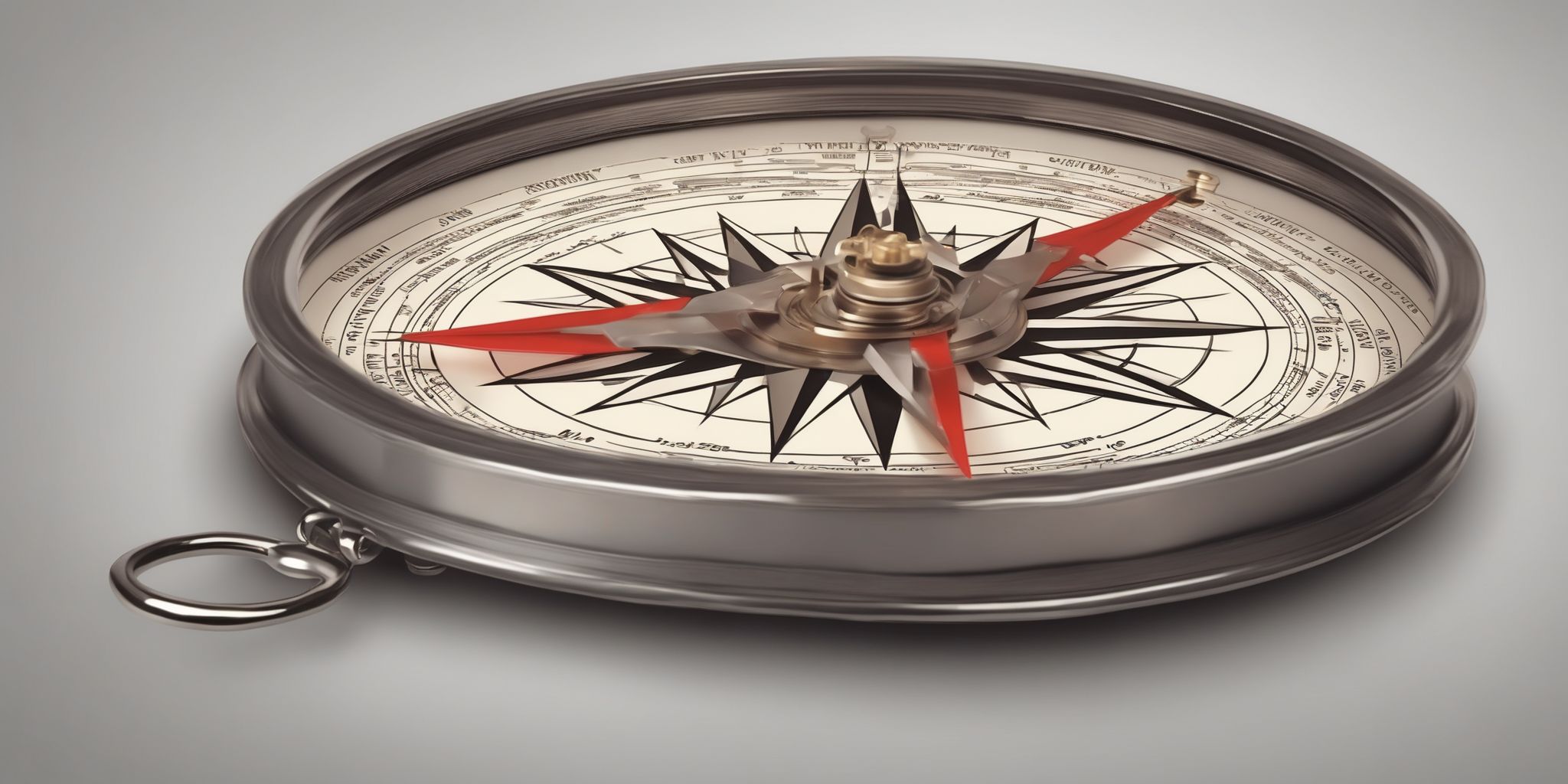What is a Balance Sheet?
A balance sheet is a financial statement that shows a company's financial position at a specific time. It includes what the company owns (assets), owes (liabilities), and the difference between them (equity).
What is a Balance Sheet?
Definition of Balance Sheet
A balance sheet is a financial statement that provides a snapshot of a company's financial position at a specific point in time. It lists the organization's assets, liabilities, and shareholders' equity. Assets are items of value owned by the business, such as cash, accounts receivable, buildings, and equipment. Liabilities represent the company's obligations, including debts and current liabilities.
Shareholders' equity is the ownership equity of the business, which includes profits and capital invested by the proprietors.
The main purpose of a balance sheet is to show the total assets of a business equal the total liabilities plus shareholders' equity, following the equation: Assets = Liabilities + Shareholders' Equity. This provides stakeholders, such as investors and government entities, with an analysis of the company's financial condition and net worth. Unlike an income statement which shows profitability over a period, a balance sheet provides information on the company's financial health and its ability to meet its obligations through assets.
Importance of Balance Sheet
A balance sheet is a financial statement that shows a company's financial position at a specific point in time. It lists assets, liabilities, and shareholders' equity.
By examining the balance sheet, investors, stakeholders, and creditors can understand the company's assets, debts, obligations, and net worth. This helps in assessing financial health and making informed decisions.
Regularly reviewing and analyzing the balance sheet helps identify trends, track performance, and make improvements. It also aids in planning for future expenses, investments, and growth opportunities.
The balance sheet is crucial for understanding a company's financial condition and guiding strategic financial planning.
Components of a Balance Sheet
A balance sheet is a financial statement that shows an organization's financial condition. It lists assets, liabilities, and shareholders' equity.
- Assets include everything the company owns like cash, buildings, and equipment.
- Liabilities represent the organization's obligations including debts.
- Shareholders' equity reflects the net worth of the business and ownership equity.
A structured balance sheet is important for financial analysis and decision-making. It helps investors, stakeholders, and the government assess the company's financial health.
By analyzing the balance sheet, stakeholders can evaluate the organization's assets, debts, and profits in a year. This helps in understanding the company's convertibility into cash and tangible assets.
A well-prepared balance sheet is important for modeling the company's financial future and ensuring its sustainability.
Assets
Assets on a balance sheet can include:
- Cash
- Accounts receivable
- Buildings
- Equipment
- Real estate
Current assets:
- Can be converted into cash within a year
- Examples are cash, accounts receivable, inventory
Non-current assets:
- Have longer-term use or physical existence
- Examples are buildings, equipment
Understanding the balance sheet is important:
- Provides a snapshot of a company's financial condition
- Shows equity ownership, debts, net worth
Investors and stakeholders:
- Rely on the balance sheet for financial analysis
Balance sheet details:
- Total assets, liabilities, shareholders' equity
- Helps in understanding convertibility, obligations
Accurate reporting of assets is crucial:
- Presents a clear picture of capital and profits
- Helps in financial modeling and analysis.
Liabilities
Liabilities on a balance sheet are what a company owes to its creditors, suppliers, and other parties. These debts fall into two categories: current liabilities, due within a year, and long-term liabilities, which extend beyond a year.
Unlike assets, which represent what a company owns, liabilities represent what it owes. The balance sheet ensures that assets equal liabilities plus equity. Examining liabilities is crucial for evaluating an organization's financial health and stability. High debt levels can indicate risks that affect profitability and investor interest.
Understanding liabilities' makeup is essential for stakeholders to assess the company's financial condition accurately. Analyzing the balance sheet helps shareholders evaluate the organization's debt management, make informed investment decisions, and determine its long-term sustainability.
Shareholders’ Equity
Shareholders' equity on a balance sheet shows how much of a company shareholders own.
To find this value, subtract the total liabilities from the total assets.
This number is important for understanding the company's financial health.
It indicates the net value of the company that belongs to its shareholders.
Shareholders' equity includes profits, ownership equity, and contributions from investors.
Assets like buildings and equipment also factor into this value.
Investors and stakeholders need to grasp shareholders' equity to assess the company's financial stability.
It shows how well the company can meet its obligations and turn assets into cash.
In financial analysis, shareholders' equity is a critical component of the balance sheet.
It, along with assets and liabilities, paints a complete picture of the company.
Understanding Balance Sheet Formula
The balance sheet formula is a basic equation used to calculate a company's financial position. It shows assets, liabilities, and equity at a specific point in time.
This formula helps stakeholders and investors analyze a company's financial condition. It consists of total assets equaling total liabilities plus shareholders' equity.
Key components are current assets, fixed assets, current liabilities, debts, and equity.
Current assets are assets expected to become cash within a year. Fixed assets are tangible assets like buildings.
Liabilities include the company's obligations, while equity shows ownership equity and profits retained.
Current vs. Non-Current Assets and Liabilities
Assets and liabilities are important parts of a company's balance sheet.
- Current assets, like cash and accounts receivable, can be turned into cash within a year.
- Non-current assets, such as buildings and equipment, take longer to convert.
Similarly,
- Current liabilities, such as debts due within a year, impact short-term finances.
- Non-current liabilities, like long-term debts, affect long-term financial health.
Analyzing these differences is crucial for understanding a company's liquidity and finances.
Effective management and analysis are needed for strategic decisions.
Regularly checking the balance sheet helps stakeholders and investors assess the financial health.
Understanding current and non-current assets and liabilities is vital for business success.
Example of a Balance Sheet
A balance sheet is a snapshot of a company's financial condition at a specific point in time.
It includes assets, liabilities, and shareholders' equity.
Assets can be current (like cash) or fixed (like buildings).
Liabilities are the company's obligations, including debts.
Shareholders' equity is the net worth of the company.
The balance sheet follows the equation assets = liabilities + shareholders' equity.
It provides a clear view of the company's financial health.
A well-structured balance sheet lists assets on one side and liabilities/shareholders' equity on the other.
This helps to show the balance between what the company owns and what it owes.
This analysis helps investors, stakeholders, and government entities understand the company's financial position.
Financial Modeling using Balance Sheets
A business's balance sheet has important components such as assets, liabilities, and equity.
Analyzing asset accounts is crucial in financial modeling. There are two types: current assets (like cash and accounts receivable) essential for short-term health, and non-current assets (such as buildings and equipment) with long-term value.
Understanding the company's liabilities, including debts and current liabilities, is equally important.
The structure of the balance sheet affects the accuracy of financial modeling. It helps investors and stakeholders assess the financial condition for informed decisions.
Having a clear balance sheet is vital for modeling an organization's net worth and ownership equity.
Converting tangible assets into financial statements requires thorough analysis.
An organized balance sheet aids in financial modeling, offering insights into profitability and overall financial health.
Importance of Structured Balance Sheets
A structured balance sheet is important for a company's financial health and stability. It shows assets, liabilities, and shareholders' equity at a specific time.
Without a clear balance sheet, understanding finances becomes difficult for investors, stakeholders, and the company.
A well-organized balance sheet helps with decision-making and planning by analyzing finances, trends, and making informed choices.
If a balance sheet is not maintained, consequences like inaccurate financial analysis and mismanagement of assets can occur.
Access Exclusive Templates for Balance Sheets
Exclusive templates for balance sheets make it easy to show a company's financial position.
These templates have sections for assets, liabilities, and equity.
They help organizations organize and analyze financial information.
By using these templates, companies can create balance sheets quickly and accurately.
Users save time and effort because the templates handle formatting.
Templates also help with analyzing a company's financial health.
Investors and stakeholders can make better decisions with this information.
The templates include line items for assets, liabilities, debts, and more.
They give a complete view of a company's financial condition.
In short, exclusive balance sheet templates improve financial statement modeling.
This helps businesses manage finances better.
Enhancing Skills with Premium Templates
Enhancing skills related to balance sheets is easier with premium templates. These templates help individuals understand assets, liabilities, and shareholders' equity.
Premium templates provide structured formats and formulas. This enables users to analyze financial statements easily. They also help in financial modeling, allowing users to forecast a company's financial condition.
Users can input data such as current assets, fixed assets, debts, and equity. This helps assess the organization's net assets and financial health.
With premium templates, users can improve their balance sheet substantiation skills. They can also enhance their ability to communicate and analyze financial information effectively to investors, stakeholders, and government entities.
Key takeaways
A balance sheet is a financial statement. It shows a company's assets, liabilities, and shareholders' equity at a specific point in time.
The balance sheet helps investors understand the company's financial position.
It follows the formula: Assets = Liabilities + Shareholders' Equity.
This statement is important for assessing the company's financial health and stability.
It helps in knowing if the company can meet its obligations and manage its resources effectively.
FAQ
What is a balance sheet?
A balance sheet is a financial statement that shows a company's assets, liabilities, and shareholders' equity at a specific point in time. It provides a snapshot of the company's financial condition. For example, if a company has $100,000 in assets, $50,000 in liabilities, and $50,000 in equity, the balance sheet would show this breakdown.
What type of information does a balance sheet provide?
A balance sheet provides a snapshot of a company's financial position at a specific point in time, showing its assets, liabilities, and equity. This information helps investors, creditors, and management assess the company's solvency, liquidity, and overall financial health.
How does a balance sheet differ from an income statement?
A balance sheet provides a snapshot of a company's financial position at a specific point in time, showing assets, liabilities, and equity. An income statement, on the other hand, shows a company's financial performance over a period, detailing revenues, expenses, and net income.
What are the main components of a balance sheet?
The main components of a balance sheet are assets (such as cash, inventory, and property), liabilities (such as loans and accounts payable), and equity (such as retained earnings and stockholders' equity).
Why is a balance sheet important for financial analysis?
A balance sheet is important for financial analysis because it provides a snapshot of a company's financial position at a specific point in time, allowing analysts to evaluate its liquidity, solvency, and overall financial health.
For example, comparing current assets to current liabilities can help determine a company's ability to meet short-term obligations.

